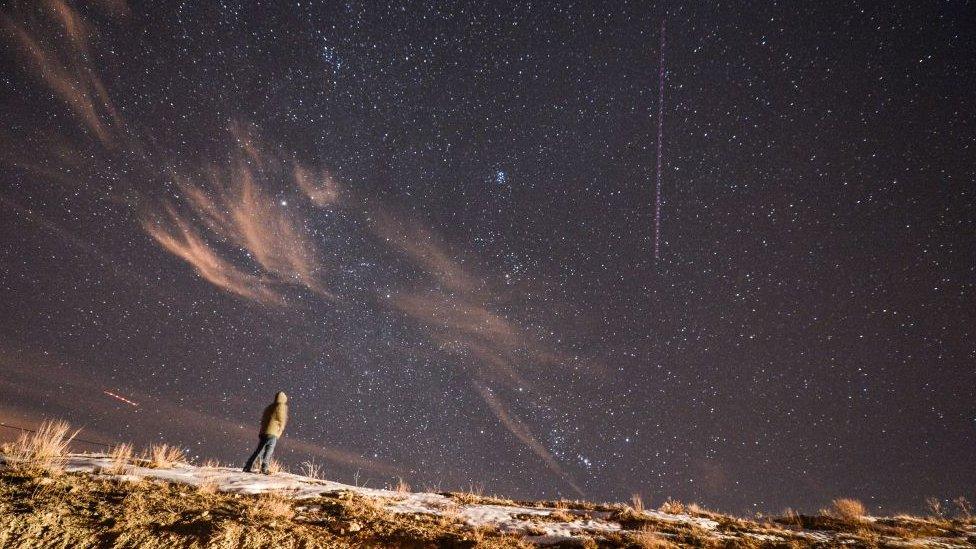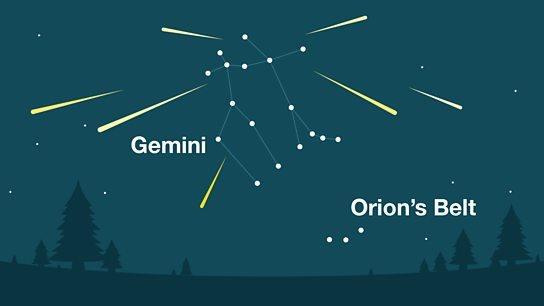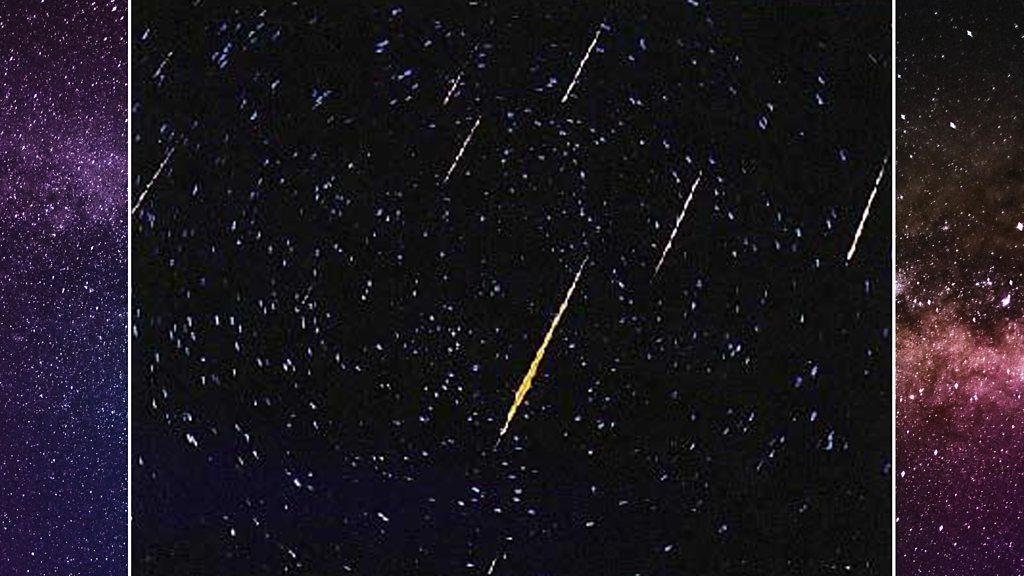Geminid meteor shower: Where, when and how to see it
- Published

The Geminid meteor shower is considered to be one of the best displays in the night sky, and this year will peak during the early hours of Friday.
Long, glowing arcs of white, yellow, blue, red and green will streak across the Northern Hemisphere sky.
You should be able to catch as many as 120 shooting stars an hour over the next night or so.
What is the Geminid meteor shower?
Most meteor showers are caused by comets - huge clumps of ice - but the Geminids are different.
The Geminid meteors originate from a rocky asteroid known as 3200 Phaethon.
Each year, the Earth passes through a trail of debris left by the asteroid as it orbits around the Sun.
When the debris hits our planet's atmosphere - at speeds of up to 70 kilometres per second - they burn up, producing streaks of light.
The streaks in the sky, known as meteors, can be caused by particles as small as a grain of sand.

If you trace the paths that the meteors take, they seem to originate from the Gemini constellation.
When is the meteor shower?
Around the world, the shower will peak on 13 December or 14 December, depending on your time zone.
In the UK, the best time to see them will be between midnight and dawn on 14 December, but you can start looking any time after sunset.
Allow X content?
This article contains content provided by X. We ask for your permission before anything is loaded, as they may be using cookies and other technologies. You may want to read X’s cookie policy, external and privacy policy, external before accepting. To view this content choose ‘accept and continue’.
The shower will peak around 02:00 GMT.
How many shooting stars will there be?
In perfect conditions, you will be able to see up to 120 shooting stars an hour.
But light pollution, weather and other factors means it will be more like 50 an hour.
Where to watch it
Anywhere in the Northern Hemisphere is good, but the shower is visible from the Southern Hemisphere too.
You will want to find a big open space where you can see as much sky as possible.
Check the weather, as clear, cloudless skies are best.
The Royal Observatory advises: "For the best conditions, you want to find a safe location away from street lights and other sources of light pollution."
Geminid meteor shower: What can I expect?
How to watch it
You do not need any special equipment. But give your eyes plenty of time to adjust to the low light levels.
The meteors can be seen in all parts of the sky, so you don't need to look in any particular direction.
But wrap up warm for the December weather.
- Published13 December 2018

- Published11 August 2015
